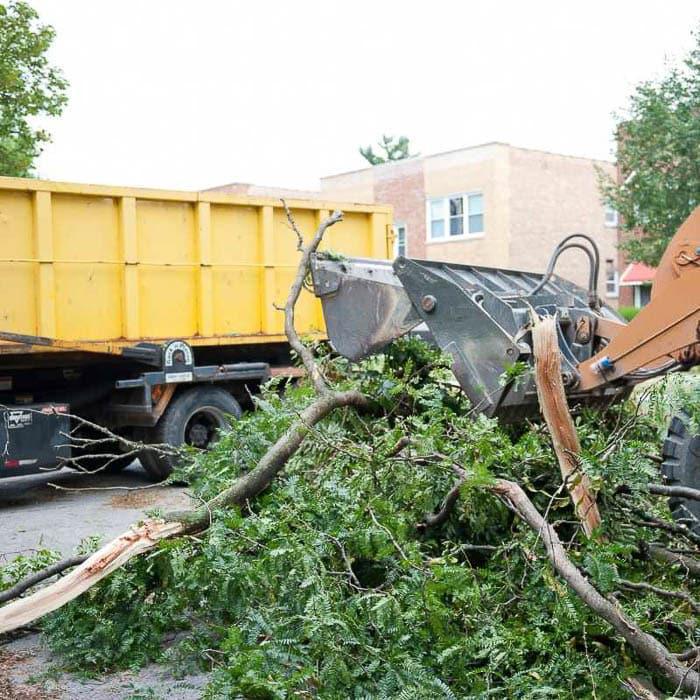After a storm, the clean-up process should begin. Depending on the severity of the storm, the cleanup is backbreaking work that requires the right tools and time. On top of that, trees are cumbersome and can be a dangerous task to handle.
PRO TIP: Before you head outside to tidy the mess, make sure there are no downed power lines or trees leaning on power lines.
Listed below are the top 5 clean-up tips for trees after a storm has hit your area.
1. Check Entire Yard First
First, you need to survey the damage to your yard after a storm has passed. After a severe storm, there is a chance that danger lurks in your yard in places where you might not see it. Downed branches can hide power lines, animals that are under cover may come out, and structural damage may have occurred.
Take note of everything you see, including broken windows, power lines, fallen trees, water pooling, and damage to hardscapes, such as bricks or concrete. Assess the full extent of the damage so that you can understand where you want to start.
All homeowners are advised to take photos of any damage because it will help when contacting your home insurance company. They will want those pictures, and you’ll want to reach out before cleaning up debris.
2. Inspect the Tree Damage
Secondly, your tree may pose a safety risk–especially if you see large fallen branches, a split tree trunk, or a broken tree top. If there are trees down on your property, you may need to jump into action. The primary thing you need to do is check to ensure that your tree hasn’t pulled down any power lines.
If it has, DO NOT touch the tree, as it can be electrically charged. Call your electric company first to see what they suggest you do – it is likely they will send someone to assess the damage.
3. Pick Up The Tree Debris That You Can
After assessing the damage and making the right calls, you’ll want to clear up what you can. Pick up small twigs, leaves, and similar debris.
Also, clean up smaller, damaged branches from trees once you have cleared that there are no major structural damages to the tree. With tree trimming tools, remove all small damaged branches that are within reach.
Once you have cleaned up, dispose of the debris however you can. When dry, branches and twigs make excellent firewood. See if your local township will turn and large branches into wood chips. As for the leaves, compost them and work them into the soil to improve it.
4. Clear Any Dangerous Debris
Lastly, clean up anything that might cause damage to someone. Be sure to clean up any broken pieces of glass from windows, doors, bird feeders, and other lawn ornaments. If you’re able, clear debris from the road and your walkways – as long as you can safely remove it by yourself. Remember to wear protective gear!
5. Do not try to do it all yourself.
After a severe storm, there is only so much you can handle on your own. It’s recommended that you reach out to a professional for damages that you can’t handle to ensure your safety. Things to look out for that should ensure a call to a professional are:
-
Large broken or hanging branches where overhead chainsaw work is needed.
-
If a tree is uprooted or downed, it can create an unnatural pattern of pressure points and tension.
-
If branches are too close or touching utility lines, report immediately to your local utility company. NEVER attempt to move downed utility lines.
-
Any task you have not been properly trained to handle or are uncomfortable undertaking.


